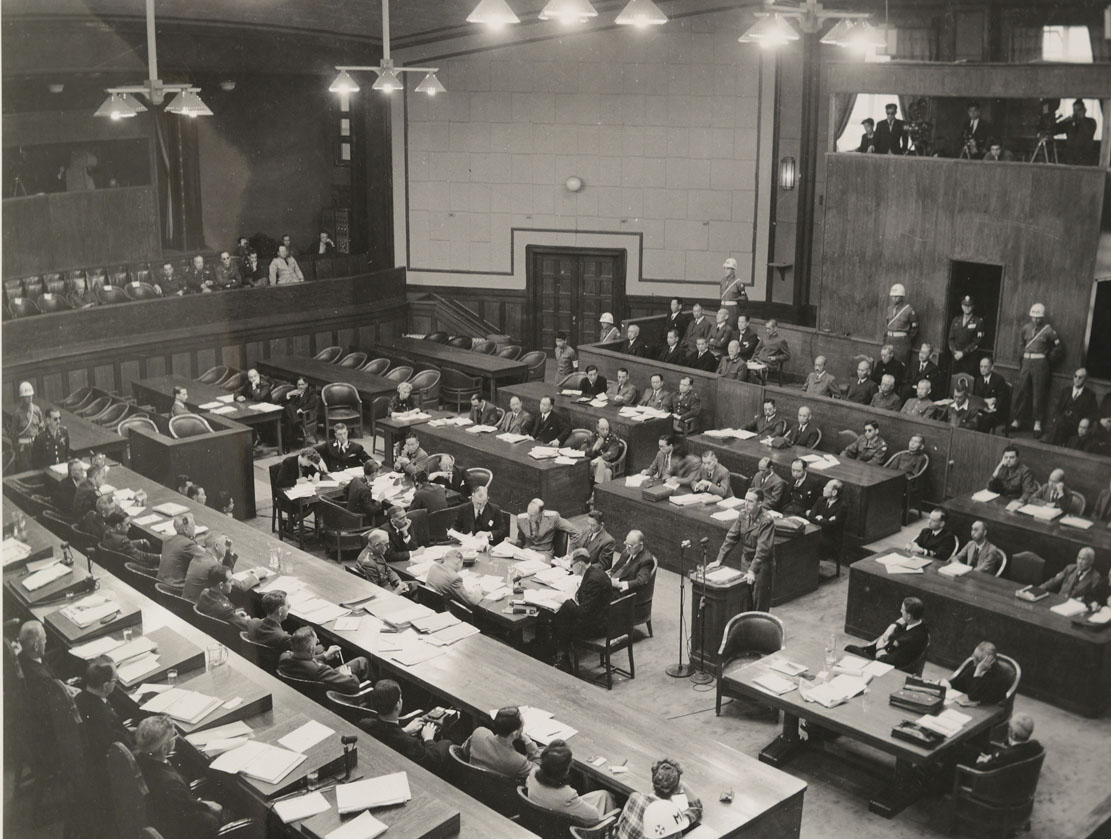
“The wrongs which we seek to condemn and punish have been so calculated, so malignant, and so devastating, that civilization cannot tolerate their being ignored, because it cannot survive their being repeated.”
Nuremberg Trials
During the last lecture of Engineering Replacement Body Parts, the main topic was bioethics. Although I was never introduced to this topic before, in high school I had already heard about the “Nuremberg Trials”, and their importance in condemning people responsible for such atrocities during World War II. This is the reason why I decided to write this post about this historical event that completely changed our views about scientific progress and research.
Crimes against humanity
Crimes against humanity refer to specific crimes against a large-scale attack targeting civilians, regardless of their nationality. These can include persecution, murder, sexual violence, enslavement, torture, enforced disappearance, etc. Unlike genocide, crimes are not necessarily committed against a specific national, ethnical, racial or religious group. These crimes can also be committed in peacetime by legal State policies as well as non-State armed groups or paramilitary forces.

Since the 1945 Nuremberg Charter, the list of crimes against humanity expanded via diverse international treaties, such as the Statute of the International Criminal Tribunal for the former Yugoslavia (1993), the Statute of the International Tribunal for Rwanda (1994) and the Rome Statute of the International Criminal Court (1998). The Rome Statute is the most recent and expansive list of specific acts that may be considered against humanity.
Video introducing the Nuremberg Trials
18th October 1945

The International Military Tribunal (IMT) was composed of both Allied countries and representatives of Nazi-occupied countries and aimed at punishing the leaders and army of a regime. This was the first time in history. 22 Nazi Germany’s military, economic and political leaders were brought to trial in Nuremberg for crimes against peace, war crimes, and crimes against humanity. The tribunal delivered its judgement against the Nazi leaders on 30th September and 1st October 1946: 12 were sentenced to death, 3 to life imprisonment, 4 to imprisonment ranging from 10 to 20 years, and 3 were acquitted.
Subsequent Nuremberg Proceedings
Subsequent Nuremberg Proceedings were trials to determine the guilt for crimes against peace, war crimes, and crimes against humanity of defendants who represented many parts of German society, from jurists and politicians to businessmen, physicians, army officers and collaborators.

These trials included 23 leading German physicians and administrators who were accused of human experimentation utilising thousands of concentration camp prisoners without their consent or were involved in the Euthanasia Program. This programme aimed at systematically killing those they considered “unworthy of life” due to severe psychiatric, neurological, or physical disabilities. On 20th August 1947, after almost 140 days of proceedings, including the testimony of 85 witnesses and around 1,500 documents, the judges found 16 physicians guilty, and 7 were sentenced to death.

I already knew about the Euthanasia Programme due to a school journey in Germany and Austria aimed at “experiencing” the journey of survivors of WWII. In this journey, I also visited an actual centre that was used during the Euthanasia Programme to exterminate all German and Austrian children with severe neurological disorders and autism: the “Hartheim Castle”. I still remember the net contrast between the appealing aspect of that castle and the very dark atmosphere inside.

In the ground floor of this castle, there is a very impressive memorial that was made after Americans occupied that place at the end of the war. This memorial is a continuous screen positioned along the walls and in the centre of a room. This screen quotes names of all people killed there, at least the ones we have memories of. These names were written very close to each other with a very small size, and still occupied an entire room. This view is still so vivid in memory and continues to impress me.
While researching more about “crimes against humanity”, I realised that the Nuremberg code is not the only one that codifies specifically for crimes against humanity but there are more recent codes I had never heard of! Moreover, I had no idea about the existence of so many different types of crimes that can be considered against humanity. I thought that the only one was basically the extermination of part of society with specific traits or ethnicity (e.g., extermination of black people or Jewish). This proves that it is never wrong to reiterate such important ethical concepts. I felt also shocked by the very small number of people actually sentenced for those crimes, compared to the real number of people that should be held responsible.
In conclusion, it is still incredible to me how the Nuremberg Trials, held more than 70 years ago, can still affect so much our scientific progress and research. I believe that this knowledge is essential for me to become a good biomedical scientist. I will always keep in mind this determining historical event while designing my own experiments as well as reviewing other scientists’ papers to avoid committing the errors of the past. That way, I can positively contribute to the scientific community in an ethical and respectful way.
References
1. United States Holocaust Memorial Museum, “The Nuremberg Trials”: https://www.ushmm.org/collections/bibliography/the-nuremberg-trials
2. TRIAL International, “Crimes against humanity”:
This blog is well researched and the language is clear and easily understood. However, it would be good to write in a slightly more concise manner, consider if all that is being said is directly relevant to your argument. This is a really interesting topic but it would be good to try and link the trials more into how they have shaped modern day bioethics and bioresearch, maybe also discuss the ethical implications of using the results of the scientific studies performed as part of these crimes against humanity.